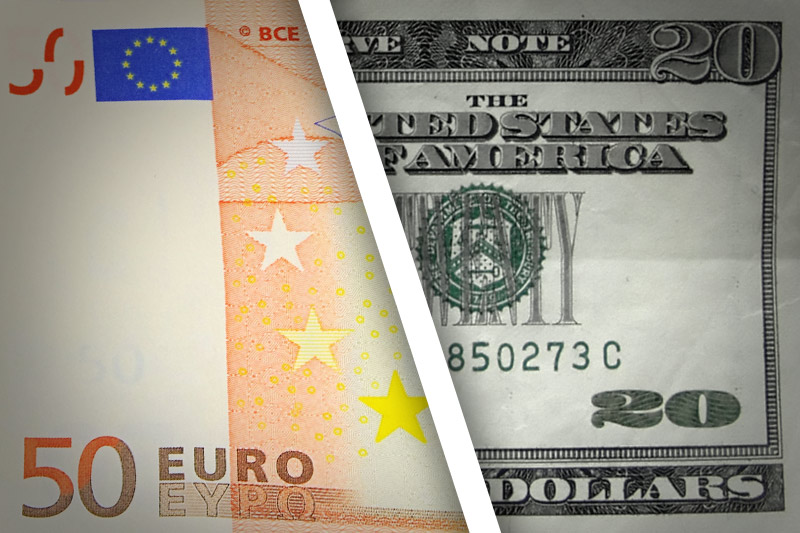Investing.com -- EUR/USD rose considerably during an abbreviated session, as currency traders looked to capitalize on last-minute gains ahead of the Christmas holiday.
The currency pair traded between 1.0904 and 1.0966 before settling near session-highs at 1.0963, up 0.0052 or 0.47% on the session. EUR/USD has been relatively flat since last week's historic decision by the Federal Reserve to abandon a seven-year zero interest rate policy by approving its first rate hike in nearly a decade. The pair is also virtually unchanged since the European Central Bank rattled global foreign exchange markets on December 3 with an unexpected decision to approve only limited easing measures with its comprehensive asset-purchasing program. Following the shocking announcement by ECB president Mario Draghi, the euro surged more than 3% against the dollar on the session, one of its strongest one-day moves of the year.
EUR/USD likely gained support at 1.0538, the low from Dec. 3 and was met with resistance at 1.1496, the high from Oct. 15.
The U.S. Department of Labor's Bureau of Labor Statistics (BLS) said on Thursday that initial claims for state unemployment benefits fell by 5,000 to a seasonally-adjusted 267,000 for the week ending on Dec. 18. The number of initial claims dipped to near 45-year lows, falling to levels last seen in late-1973. Analysts expected new claims to decelerate slightly by 1,000 to 270,000 on the week. Last Wednesday, Fed chair Janet Yellen cited a tightening labor market that is nearing full employment as the primary factor in the Fed's decision to raise its benchmark Federal Funds Rate.
Investors continued to digest solid inflation data from Wednesday's session for further indications on when the Federal Open Market Committee (FOMC) could approve its next rate hike. On Wednesday morning, the U.S. Department of Commerce's Bureau of Economic Analysis (BEA) said the Personal Consumption Expenditure (PCE) price index increased by 0.4% on a yearly basis last month, above 0.2% annual gains in October.
The Core PCE index, which strips out volatile food and energy prices, inched up by 0.1% last month, in line with consensus estimates. Over the last year, core prices are up 1.3%, unchanged from October's reading. Core PCE prices, the Fed's preferred gauge for inflation, have fallen below its targeted goal of 2% for every month over the last three years. Yellen expects long-term inflation to move toward the Fed's targeted objective, as temporary factors from a stronger dollar and dwindling oil prices fade.
At last week's historic meeting, the FOMC projected that the upper-bound range for the Fed Funds Rate will increase a full percentage point to 1.5% by the end of 2016. The estimates imply that the FOMC could approve four modest rate hike throughout the course of next year. On Thursday, the CME Group's (O:CME) Fed Watch calculated the probability of a March rate hike at 50.3%, down from 53.6% a session earlier.
Yields on the U.S. 10-Year fell by one basis point to 2.24%, while yields on the Germany 10-Year gained a basis point to 0.63%.
The U.S. Dollar Index, which measures the strength of the greenback versus a basket of six other major currencies, fell by more than 0.40% to an intraday low of 97.96, before settling at 98.02. Earlier this month, the index eclipsed 100.00 to reach its highest level in more than 12 months. With only a handful of sessions left in 2015, the euro is down by more than 9% versus the dollar since the start of the year.
EUR/USD has fallen sharply from its level of 1.2104 on New Year's Day, 2015, amid continuing signs of divergence between the Fed and the ECB.
